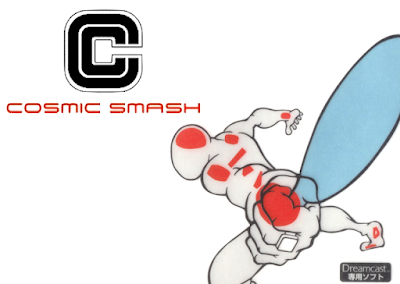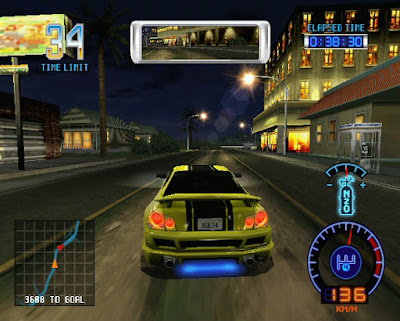You may recall a recent post here at the Junkyard in which I was somewhat apathetic towards Cosmic Smash, the painfully stylish retro-futuristic squash-cum-Breakout NAOMI port that graced the Dreamcast during its final days as a living, breathing platform. The point of that post wasn't to bash Cosmic Smash though; it was to point out that a reimagining of Sega Rosso's quirky, super-niche bat-and-ball 'em up was being worked on for the impending Sony PlayStation VR2. Since then I have been lucky enough to be invited to sample this title - C-Smash VRS - for myself.
While my lukewarm opinion of the inspiration for C-Smash VRS hasn't really changed (indeed even contemporary reviews - of which there are precious few - weren't overly gushing), I would now like to explain why this pseudo sequel to Cosmic Smash is probably about as close to a next-gen Dreamcast game as we're likely to see for some time.
 |
| The fridge had backup. |
In order to sample C-Smash VRS, I travelled to the fair city of London and to a rather nice venue called Icetank in the trendy Covent Garden district. In retrospect, the venue couldn't have been more appropriate, with its minimalist whitewashed rooms and open spaces plastered with the familiar lurid orange concentric 'C' motif.
If a venue was ever going to be perfect for showing off a game like C-Smash VRS, Icetank is surely it. Well, unless there's a retro-futuristic space station available for hire somewhere. The open plan nature of the venue lent itself well the multiple PS VR2 systems set up; I can only imagine the carnage which could have ensued if there had been tables full of drinks and food dotted about the place as idiots like me jumped and waved their arms and hands around while wearing a VR headset.
 |
| Her Converse are better than mine. |
Fittingly, an original Cosmic Smash arcade cabinet was positioned out of harm's way in a corner - a cabinet I naturally had to play on and which belongs to C-Smash VRS game director Jörg Tittel. I understand this particular cabinet was originally housed at Sega World in London's long lost Trocadero entertainment centre, and the story goes that if you listen closely to the speaker grill at night you can still hear the frantic pulse rifle fire and screams of the colonial marines from Alien War, trapped forever like tormented, ethereal echos of the past. Actually, I just made that up. Hudson, run a bypass. What? Where am I?
 |
| A Cosmic Smash arcade cabinet sat quietly in the corner, minding its own business... |
 |
| So I played on it. Note my inferior Converse. |
Props must go the PR agency 4media group for their running of the C-Smash VRS preview event, and also to Lost in Cult for their production of the rather nice Cosmic Smash themed press kits that were handed to attendees. Full disclosure here though - I was invited to the event by my Dreamcast Junkyard colleague Andrew Dickinson, who also heads up the gaming periodical [Lock-On]...which is produced by Lost in Cult. So yeah, now that little disclaimer is out of the way, let's get down to business: C-Smash VRS is a fucking disaster of a game. What were they thinking?! Of course, I jest.
 |
| I can't believe Edge is £6.50 now. It was 75p last time I bought it. Inflation in action, folks. |
No, from the small snippet I played of RapidEyeMovers and Wolf & Wood's reimagining of Toshiaki Miida et al's original vision, I can honestly say I was left thoroughly impressed by the experience. This is in no small part due to the fact that the Sony PlayStation VR2 is undoubtedly one of the most impressive pieces of consumer hardware I've ever had the pleasure of sampling; but then that's probably to be expected considering the price of the thing. I've already moaned about that though, so I'll spare you the sob story again here.
 |
| Why won't they...play with me? |
As this was a preview event, only two modes (three if you count the two player versus mode) were available from the C-Smash VRS main menu - a tutorial and a practice mode. Both in theory make sense in the modern era, especially since VR controls do take a bit of getting used to if you're unfamiliar with how they generally work. After a fairly intuitive calibration (where you're invited to reach out and grasp a small cuboid doodad), you get into the game.


.png)




.png)













.png)








